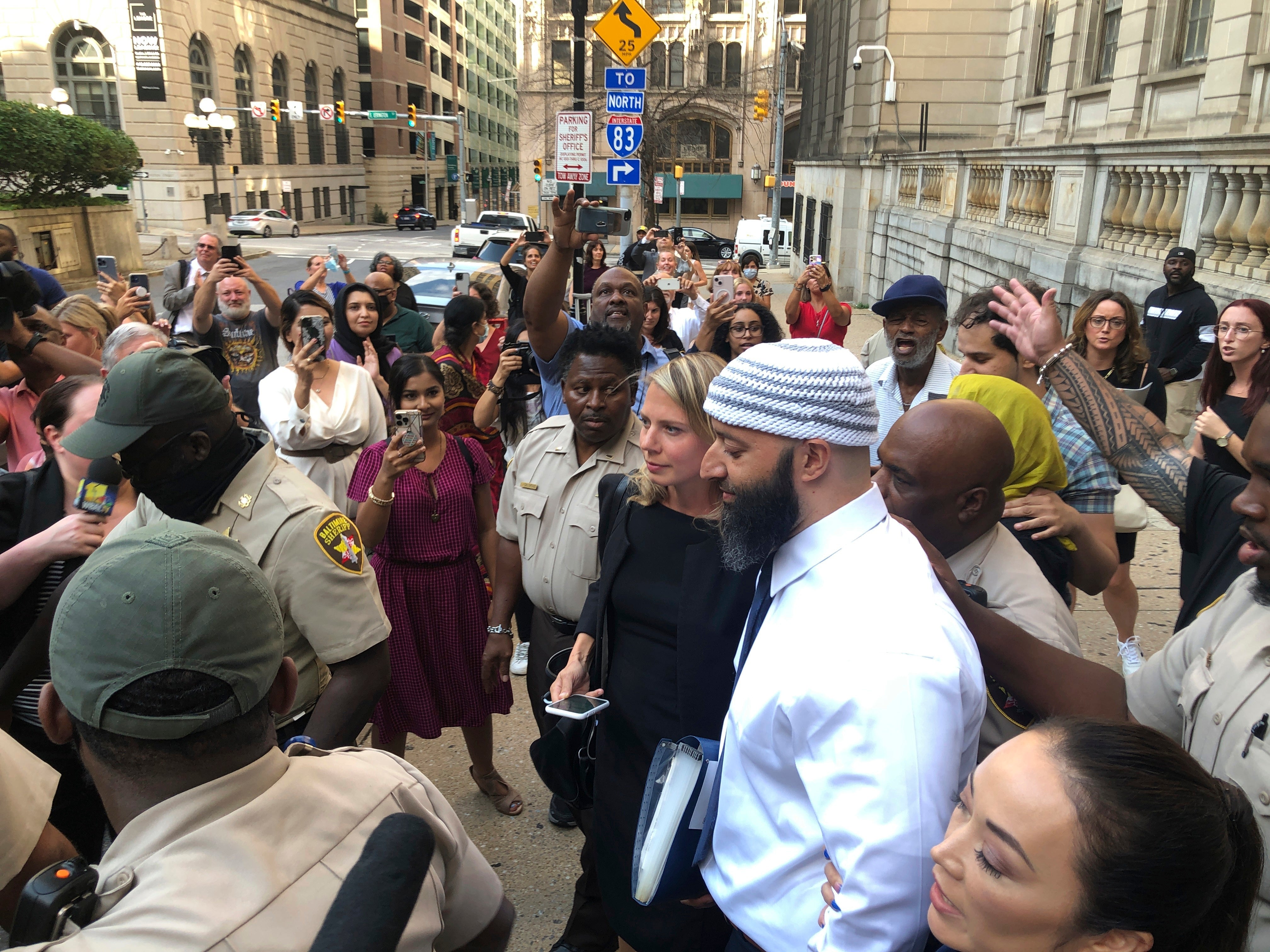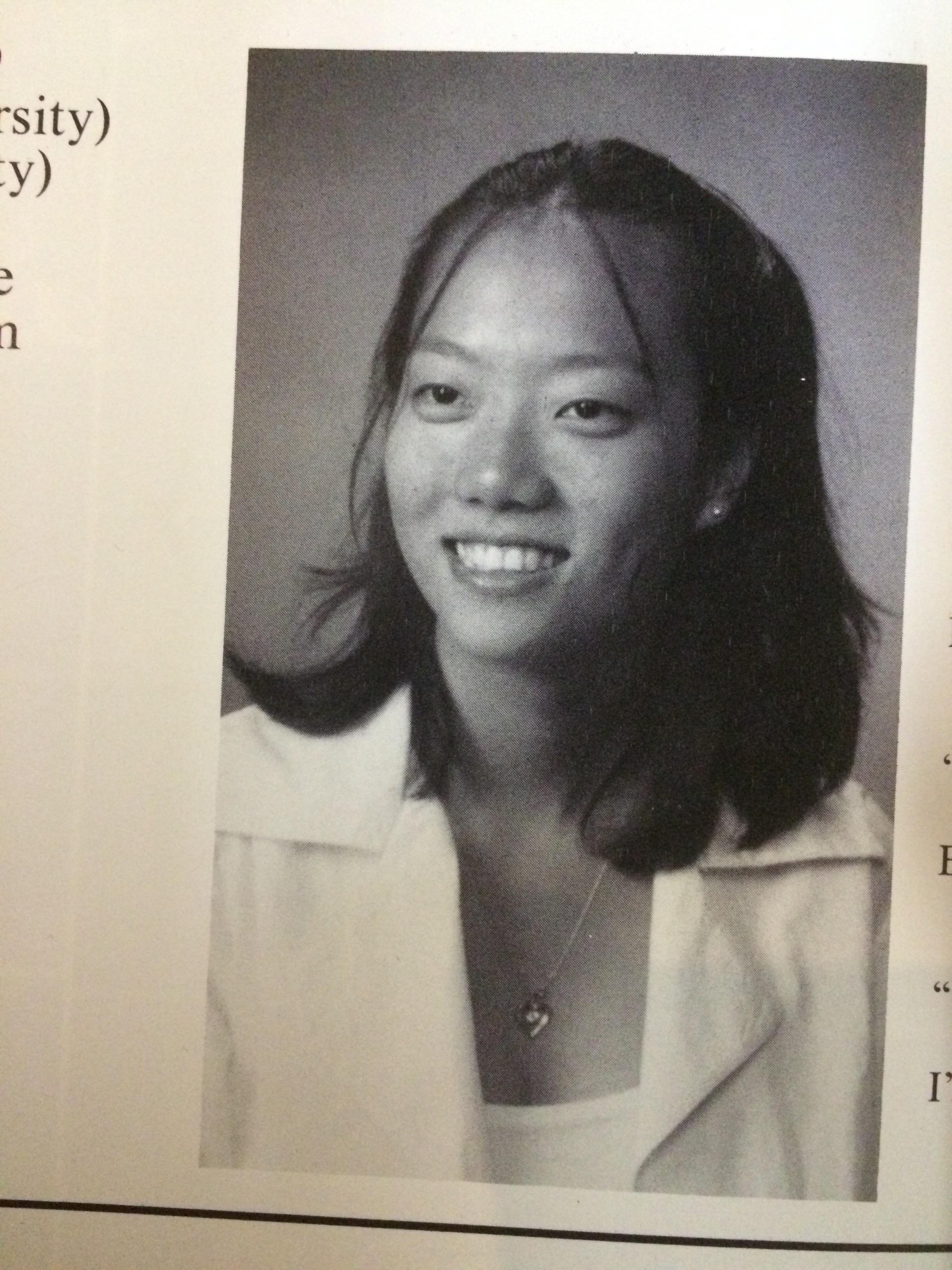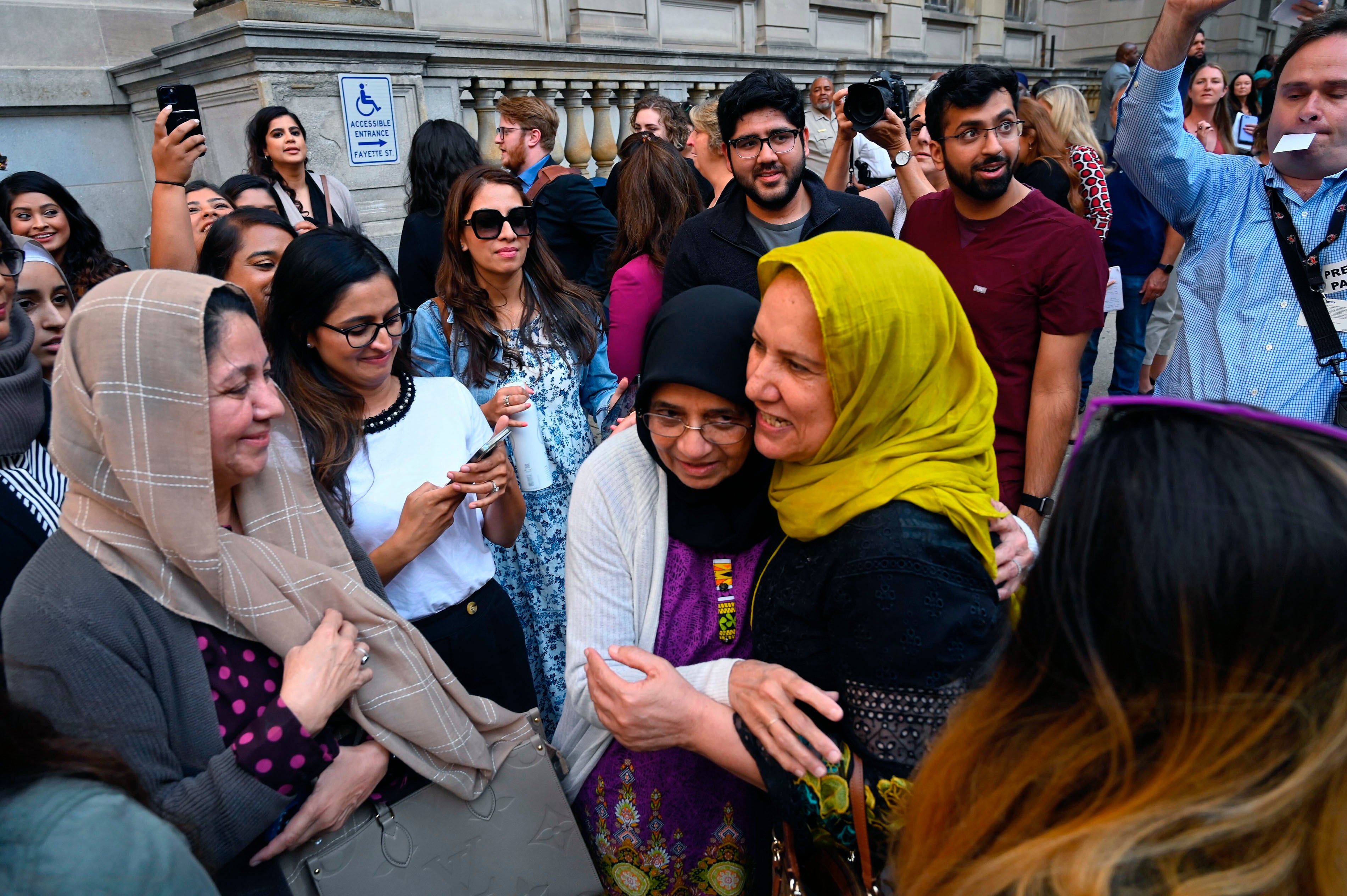Adnan Syed: Serial podcast reveals notes about another potential suspect led to conviction being tossed
Notes revealed two separate phone calls by two different people alerted prosecutors to another potential suspect more than two decades ago
The discovery of two handwritten notes about another potential suspect ultimately led to Adnan Syed’s conviction being tossed, according to a newly released Serial episode.
The “messy” notes, which were found deep within boxes of files on the case earlier this year, revealed that two different people had placed two separate phone calls alerting prosecutors to the unnamed suspect prior to Syed’s 2000 conviction.
Despite the tipoffs, the notes were not shared with Syed’s legal team and instead sat gathering dust in boxes inside the state attorney’s office for the past 23 years – all the while Syed was holed up behind bars for a crime he says he didn’t commit.
Now, in 2022, the notes have finally come to light and “shocked” both the prosecution and the defence.
On Monday, a judge overturned Syed’s conviction and he walked out of court a free man.
Serial, which first propelled the case to global attention and cast doubts on Syed’s guilt back in 2014, published the new episode titled “Adnan is Out” on Tuesday morning – just hours after his release.
In it, journalist Sarah Koenig revealed what finally led Baltimore prosecutors to rethink the 41-year-old’s conviction for the 1999 murder of his former girlfriend Hae Min Lee.
It all began when Maryland’s Juvenile Restoration Act took effect on 1 October 2021.
The law allows offenders who were juveniles at the time of the offence to apply to have their sentences reduced. Under the law, the offence must have taken place when the individual was a minor and they must have served at least 20 years of the sentence.
Syed was 17 when he was arrested and charged with strangling Lee to death. He has spent the last 23 years behind bars.
By 2022, Ms Koenig said that Syed, now 41, had been “trying to tamp down hope” that he would find freedom.
But his attorneys immediately applied for his sentence to be reduced under the new state law.
When the case landed on the desk of Becky Feldman, chief of the Sentencing Review Unit of the Baltimore City State’s Attorney’s Office, to review the request, she became “bothered by the case”, says Ms Koenig.
As the podcast host explains, the Juvenile Restoration Act is “not supposed to be a reinvestigation” of the case, but that ended up happening with Syed as Ms Feldman grew concerned with the validity of the original case and conviction.
In March, the prosecution and Syed’s defence filed a joint request for DNA testing and Ms Feldman asked to look through the case files.
More than a dozen boxes of the state’s case files were kept at the state attorney general’s office.
Amongst the swathes of documents, Ms Feldman stumbled across two old, handwritten notes.
The notes were “messy” and “hard to make out”, says Ms Koenig, but the prosecutor soon realised that they both pointed to another potential suspect in the case.
The notes had been made by a prosecutor working on the original case and detailed two separate calls from two different callers tipping them off to another individual potentially tied to Lee’s death.
“They appeared to be written by a prosecutor memorialising two different phone calls from different people who called the state attorney’s office to give information about the same person,” said Ms Koenig.
The notes weren’t dated but appeared to have been made several months apart. Both appeared to be from before Syed’s 2000 trial, says the podcast host.

When Syed’s team was shown the notes by Ms Feldman, they both learned that the state had failed to turn them over to the defence in the original case.
“They had never seen them before,” says Ms Koenig, adding that both the defence and current prosecutors were “shocked”.
The podcast host points out that this was a clear Brady violation – where a prosecutor fails to provide the defence with evidence that could be helpful to a defendant’s case.
This created an “overwhelming cause for concern” where the state recognised that they had to release him from prison.
Beyond the legal violation, the unseen notes also led investigators to two other possible suspects.
The two suspects, who were not named because of the ongoing investigation, were both known to the initial 1999 murder investigation and were not properly ruled out or disclosed to the defence, prosecutors revealed in last weeks’ court filing requesting Syed’s conviction be vacated .
According to the court documents, one of the suspects had threatened to kill Lee around the time of her murder, saying that “he would make [Lee] disappear. He would kill her”.
Ms Koenig, who said that she knows who the two suspects are but is not naming them because no charges have been brought, said that this suspects was heard saying he was “upset with” Lee and had a motive to kill her but that the state “more or less overlooked” him.
The state has now looked into that person and found his potential involvement in the case to be “credible”.
He had the “means, motive and opportunity,” says Ms Koenig.

Lee’s car was also found directly behind the house of one of the suspect’s family members, prosecutors said.
One of the suspects was ruled out of the case by police based on faulty polygraph tests, while other was also looked at in the case “but not vigorously”, says Ms Koenig.
Both suspects have criminal records, with one convicted of attacking a woman in her car and the other convicted of serial rape and sexual assault.
One of the suspects is currently behind bars for sexual assault.
The state is not identifying the suspects citing an ongoing investigation and the relationship between the two individuals is unknown.
Baltimore City State’s Attorney Marilyn Mosby said in a statement that the two individuals now suspected in the case “may be involved individually or may be involved together”.
While prosecutors have not named the two alternate suspects, one particular name did crop up in the Serial podcast which first broke the case wide open.
Ronald Lee Moore, who died by suicide in a Louisiana prison in 2008, was a convicted burglar and was also suspected in a series of other burglaries, unsolved sexual assaults and murders across Maryland. He was released from prison just 10 days before Lee’s disappearance.
Moore had been part of the original investigation but DNA found at the crime scene was not a match. The DNA also didn’t match Syed, with his attorneys saying in 2019 that his DNA was not found on any of the 12 samples from the victim’s body and car.
Following Moore’s 2008 death, he has been tied to at least two murders of young women around the same time as Lee’s slaying. It is not clear if Moore is one of the two alternate suspects now suspected in Lee’s murder.
As well as the new details, the prosecutor’s office also raised issues with other evidence from the original case.

Ms Mosby cited doubts about the validity of cellphone tower data which was used in the original trial to place Syed at the scene of the crime.
She also pointed to the unreliability of the state’s star witness Jay Wilds, who claimed that Syed confessed to killing Lee and enlisted his help in digging a hole to bury her body in the park.
Wilds changed his story multiple times during the original investigation – and has changed his story again in a recent interview with the media.
One of the main detectives on the case, Bill Ritz – who interviewed Wilds, was later accused of misconduct in another 1999 murder case. The man convicted in that case was exonerated in 2016.
While prosecutors may have stopped short of saying that Syed is innocent, Ms Koenig points out in Serial that this all shows that the case “is a mess”, bringing together all the issues with the justice system in one place.
Last Wednesday, the state asked a judge to overturn Syed’s conviction and order his release.
On Monday, a judge granted the request “in the interest of justice” and Syed walked out of court a free man after 23 years in prison.
His attorney Erica Suter told reporters that his first words were: “He said he can’t believe it’s real.”
“He’s looking forward to being with his family,” she added.
Ms Mosby said that the state was not declaring him innocent just yet but that “in the interest of fairness and justice, he is entitled to a new trial”.
She added: “Ms Lee’s family deserve closure, they deserve justice and we intend to fight for that.”
Under state law, prosecutors now have 30 days to decide whether to drop the charges against Syed or to retry the case.
Ms Mosby said that prosecutors were waiting for the results of DNA testing which they hope could advance the investigation.
State prosecutors and Syed’s defence attorneys filed a request for Lee’s clothing to be tested using new touch DNA technology in March.
The DNA results came back in August without anything conclusive but the prosecutor’s office is now awaiting further testing.
Lee, 18, vanished without a trace on 13 January 1999 after leaving Woodlawn High School in Baltimore, Maryland, where she was a senior. Her body was found around one month later buried in a park in Baltimore. She had been strangled.
Syed, who was 17 at the time, was arrested and charged with her murder. In 2000, he was convicted of murder, robbery, kidnapping and false imprisonment and sentenced to life in prison.
Syed has always maintained his innocence.




